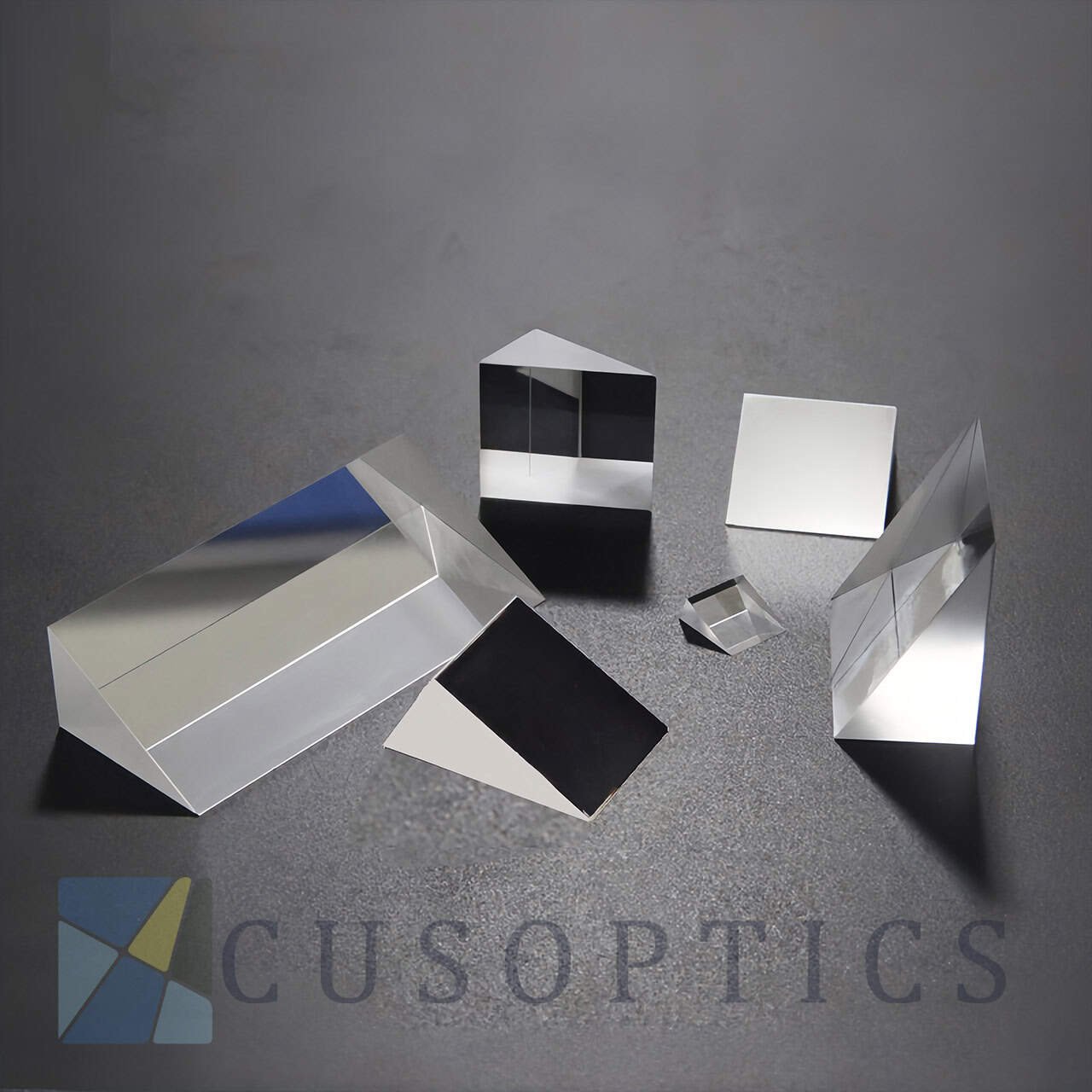High-Reflection Coating – HR Coating
Custom Fabrication
Custom Fabrication
Any question you want to know, just to contact email: cusoptics@micquartz.com.
What is High-Reflection Coating – HR Coating?

High reflectivity coating film is a functional thin film coated on the surface of optical components such as lenses and prism substrates. Its core purpose is completely opposite to that of an anti reflective membrane. It maximizes the reflectivity of the surface to incident light while minimizing transmittance and absorption.
You can imagine it as putting a “mirror armor” on the optical surface, accurately reflecting the vast majority of light energy back.
Why do we need High-Reflection Coating – HR Coating? ——Control the optical path and energy.
In many optical systems, the core requirement is not to allow light to pass through, but to efficiently guide and manipulate the optical path.
Building a resonant cavity: The core of a laser requires two end mirrors to reflect light back and forth to generate laser.
Change the direction of the light path: such as the mirror in a telescope, used to bend and converge light.
Efficient energy utilization: In laser processing (cutting, welding), it is necessary to transfer laser energy to the workpiece almost without loss.
High reflectivity film achieves extremely high reflectivity to meet all the high requirements for optical path control and energy efficiency in the above scenarios.
How does HR coating work?
High reflective coating film is also based on the interference effect of light, but its purpose is opposite to that of anti reflective film, which is to achieve constructive interference.
Principle of high reflection film in media:
Structure: Two different refractive index dielectric materials (such as high refractive index TiO ₂/Ta ₂ O ₅ and low refractive index SiO ₂) are alternately plated on the substrate, with each layer having an optical thickness of 1/4 of the target wavelength.
Interference enhancement: The light waves reflected back from each layer interface have the same phase and undergo constructive interference, where the waveforms overlap with each other, resulting in a total reflected light intensity much greater than that of a single interface.
Layers: The more layers there are, the higher the reflectivity is usually, reaching 99.9% or even 99.999% or more.
Principle of metal high reflection film:
Utilizing the strong response of free electrons in metals such as aluminum, silver, and gold to light waves to directly reflect light. The reflection process is mainly based on Fresnel reflection, rather than interference effects.
Types & Features of Anti Reflective Coatings
| Type | Features | Advantage | Shortcoming | Application |
|---|---|---|---|---|
| Dielectric HR | Utilizing the interference effect of multi-layer dielectric films to achieve high reflection. | Extremely high reflectivity (>99.9%), low absorption loss, high laser damage threshold, and good durability. | The reflection bandwidth is relatively narrow and is usually designed for specific wavelengths and incident angles. The process is complex and the cost is high. | Laser resonant cavity mirror, laser processing head focusing mirror, high-precision interferometer reflection mirror. |
| Metal HR | Reflect light using the inherent properties of metals (aluminum Al, silver Ag, gold Au). | The reflection band is extremely wide (covering ultraviolet to infrared), independent of the incident angle and polarization state, simple to manufacture, and low in cost. | Low reflectivity (usually<95%), high absorption loss, leading to severe heat generation. Soft texture, easy to scratch, must be coated with protective film. | Ordinary mirrors, rearview mirrors, handheld mirrors, non precision optical systems. |
Common metal film characteristics:
Aluminum (Al): It has good reflectivity from ultraviolet to infrared (about 87-92%) and is the most commonly used ordinary metal reflective film.
Silver (Ag): It has the highest reflectivity in the visible to near-infrared range (up to 98%), but it is not resistant to sulfurization and is prone to blackening, so it must be strictly protected.
Gold (Au): It has extremely high reflectivity (>98%) in the infrared region and good chemical stability, but it does not reflect visible light at all (yellow).
The advantages of HR Coating
Extremely high reflectivity: The dielectric film can achieve a reflectivity of>99.9%, minimizing the loss of light energy to the extreme.
Extremely high laser damage threshold (LIDT): The dielectric film has extremely low absorption and can withstand extremely high laser power density without being damaged, which is the core requirement of laser systems.
Controllable spectral response: can be designed to achieve peak reflectivity at specific wavelengths as needed.
Environmental durability: The dielectric film is usually very hard, wear-resistant, and resistant to chemical corrosion.
Application
Laser technology: Two end mirrors of laser resonant cavity, focusing mirrors and turning mirrors in laser cutting/welding/marking machines.
Precision measurement: mirrors in interferometers and spectrometers.
Astronomy and Aerospace: The primary and secondary mirrors of astronomical telescopes such as the Hubble Telescope.
Consumer electronics: Reflectors in the optical path of projectors.
Industrial field: Any situation that requires efficient change of optical path direction or construction of optical cavities.
Send Us A Message

